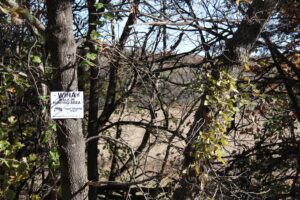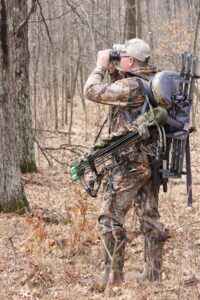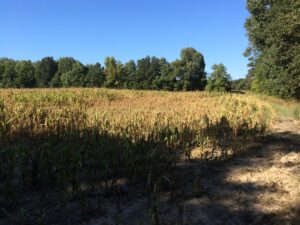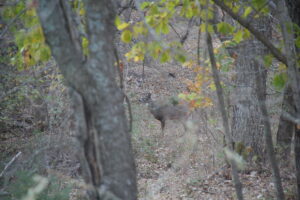Gaining access to hunt can be a difficult task across much of North America these days, but programs in 25 states that open private lands to public hunting offer a place for anyone to hunt for free.
By Bernie Barringer
I came from a non-hunting family. In fact my parents wouldn’t even let me own a gun. I’m not sure if the concern was more about the gun, or about the thought of me with a gun, but at any rate, I bought a bow when I was 14 years old and it changed my life. This was the 1970’s and living in Iowa, all I had to do was ask a few farmers for permission to hunt and I had access to more hunting land than I could possibly hunt on the limited time I had before and after school.
Those days are long gone. Today, unless a kid grows up in a hunting family, and better yet, a family with property, he’s going to have a hard time finding a place to shoot his first deer. Good deer hunting property is leased or owned for hunting, and just going out to ask for permission can still take place, but the success rate has become so low it’s not even worth trying in many areas. I hate the idea that deer hunting has become very difficult to get into for a youngster without a place to hunt.
Some areas have abundant public hunting land, but they are the exception, especially in the eastern half of the US. In many eastern and southern states, up to 95% of the land is privately owned. Many of these landowners are transplants from suburban areas who have little to no background with the outdoor lifestyle so they are not at all receptive to someone who comes knocking for permission to kill their deer.
Where are the kids going to hunt? And for many of us who do not own property, where are we going to hunt?
I have been fortunate that I have taken more than 20 out of state do-it-yourself road trip whitetail hunts in the last 15 years. I have begun to keep a careful watch on the access programs in many states that open private land to sportsmen.
 My first introduction to this opportunity took place on a deer hunt in Kansas a few years ago. I was driving back to where my travel trailer was parked after a November morning hunt when a doe ran across the remote gravel road in front of me. I slammed on my brakes just in time to miss the huge buck that was following her. I grabbed my binoculars and watched them race over a hill in the tallgrass prairie. He was the kind of buck that makes your heart pound in your ears.
My first introduction to this opportunity took place on a deer hunt in Kansas a few years ago. I was driving back to where my travel trailer was parked after a November morning hunt when a doe ran across the remote gravel road in front of me. I slammed on my brakes just in time to miss the huge buck that was following her. I grabbed my binoculars and watched them race over a hill in the tallgrass prairie. He was the kind of buck that makes your heart pound in your ears.
I spun around in the road and headed to the other side of the section to see where they might come out. But I found that they had disappeared into a brushy draw in the middle of the section. There was a white sign on the fence that stated “WIHA.” I was fully aware of the WIHA hunting lands because I had seen the pheasant and quail hunters working it with their dogs, but clearly I had been missing out on the deer hunting opportunities.
Kansas’s Walk in Hunting Access program is geared towards bird hunters, but the amount of excellent deer hunting to be found on these lands is mouth-watering. And it’s mostly overlooked. I have hunted Kansas many times since that trip, and before I go, I spend some time going over the WIHA brochure and the map of WIHA lands on the Dept. of Wildlife and Parks website.
I have since killed a nice buck on land in North Dakota designated Private Land Open to Sportsmen (PLOTS) and other states that have similar programs. Most Midwestern states now have a program that offers the landowners some compensation for allowing the public to hunt the land. In the Midwest and western whitetail states, these lands are primarily grasslands that provide bird hunting, but there are some amazing gems of deer hunting habitat on these properties and the deer hunting pressure is minimal in most cases.
In the Northeast, the programs are growing by leaps and bounds, with more and more land being enrolled each year. About half the states in the Northeastern US have a program of some sort that allows hunter access. These are not as much geared towards the shotgun toting crowd and many of these parcels offer excellent deer and turkey hunting. With so much of the East being held under private property, the public lands can be utterly overrun with hunters, yet the Voluntary Public Access lands are little known and lightly hunted in many areas.
In the Western US, these lands often fall under the heading of Block Management programs. Montana has tens of thousands of acres enrolled. Wyoming’s Private Land Public Wildlife (PLPW) is much the same. Much of the land in these two states is sagebrush with small creek bottoms running through it. You will really have to spend some time with a list of lands and aerial photos picking through these properties, but if you are diligent, you may find a gem of a property to hunt. Colorado’s Big Game Access Program (BGAC) has been off and on due to funding, but the eastern half of the state with its open prairies and center pivot irrigation systems is where most of the open land is found. If you like to spot and stalk whitetails and mule deer, this is a Mecca for doing so.
The Southeast is lagging behind in the availability of private land that’s open to public hunting. Texas and Louisiana each have a program, but none of the states to the east across the southern whitetail belt offer any program of this nature. Georgia recently received a $993,000 grant from the Federal Natural Resources Conservation Service which is intended to kick off their private land program by enrolling about 15,000 to 20,000 acres. In a part of the nation where much of the land is tied up in private ownership, timber leases where hunting is restricted, hunting clubs and urban sprawl, many more states should follow Georgia’s lead.
Most state wildlife agencies have a section of their website dedicated to these access programs, and many print brochures and in some cases maps and guidebooks to locating these lands. With the increasing number of sources for aerial photos online, in many cases you can now go to a state agency’s website look at aerial photos of each of the properties. If they do not have aerial photos included, you can go to Google Earth or Bing Maps and analyze each of these properties for likely looking habitat that might hold whitetails.
Of course there is no substitute for boots on the ground when it comes to scouting, you can eliminate the unproductive areas before hand and focus on the stuff that looks good. Chances are if it looks good, it is good, and it’s been my experience that it isn’t nearly has heavily targeted by deer hunters as the more well-known public lands.
One of the advantages, if you want to look at it that way, is that nearly all of these programs require foot traffic only. That means no motorized vehicles are allowed. I have found places a mile or more from the road that I am convinced I am the only deer hunter who sets foot in it prior to the gun season, and even then it gets little pressure. That’s partly because these places aren’t public knowledge and partly because it’s so darned hard to get a dead deer out of there. But if I find myself with a big buck on the ground, I am happy to figure out a way to get it back to the road. If that’s the worst problem I have, I will learn to live with it! I carry a large plastic sled and a two-wheeled deer cart with me, and I will use either one depending on the terrain and density of the cover.
And remember, this is private land and the landowner can make it as easy or as hard as he wants. In one case in North Dakota, I was hoofing it out of a large pasture with a stand, climbing sticks, my bow and a backpack full of gear when the landowner happened to be going by. He opened the gate when he saw me and allowed me to drive in, “just this once” to retrieve my gear. He seemed genuinely excited that I was out there trying to shoot one of those crop raiding deer.
Landowners have a lot to gain by allowing hunters on their land. Reducing crop depredation by deer is one of the reasons; this is especially true in the Midwest. In the South and East, some property owners just like the thought that a responsible hunter is keeping an eye on the place for them. And therein lies one of the biggest advantages of all for both hunters and landowners. The programs build strong communities and allow neighbors to be neighborly. These programs give hunters a chance to put on their best behavior and cast hunting in a positive light to a world that has mostly lost touch with consumptive use of wildlife.
Hunter recruitment and retention is one of the biggest challenges facing whitetail deer hunting across the US. The changing landscape of land ownership and urban sprawl has made free access more difficult than ever before. And free access to hunt is one of the cornerstones of the North American Conservation Model that has provided millions with opportunities to quality hunting that few other countries enjoy. As it becomes harder to find a place to hunt, the numbers of hunters dwindle and the urbanized culture of non-hunters and anti-hunters can make it more and more difficult to advance the model of wildlife conservation we value so much. In a day when far too many wildlife issues are decided at the ballot box rather than by biologists, the ability of new and experienced hunters to access lands to hunt is more important than it has ever been.
Fort more information, get the book, The Freelance Bowhunter: DIY strategies for the travelling whitetail hunter. The book is available for $19.99 plus $3.99 S&H or by mail; Bernie Barringer Outdoors, 9969 50th Ave, Brainerd, MN 56401.
